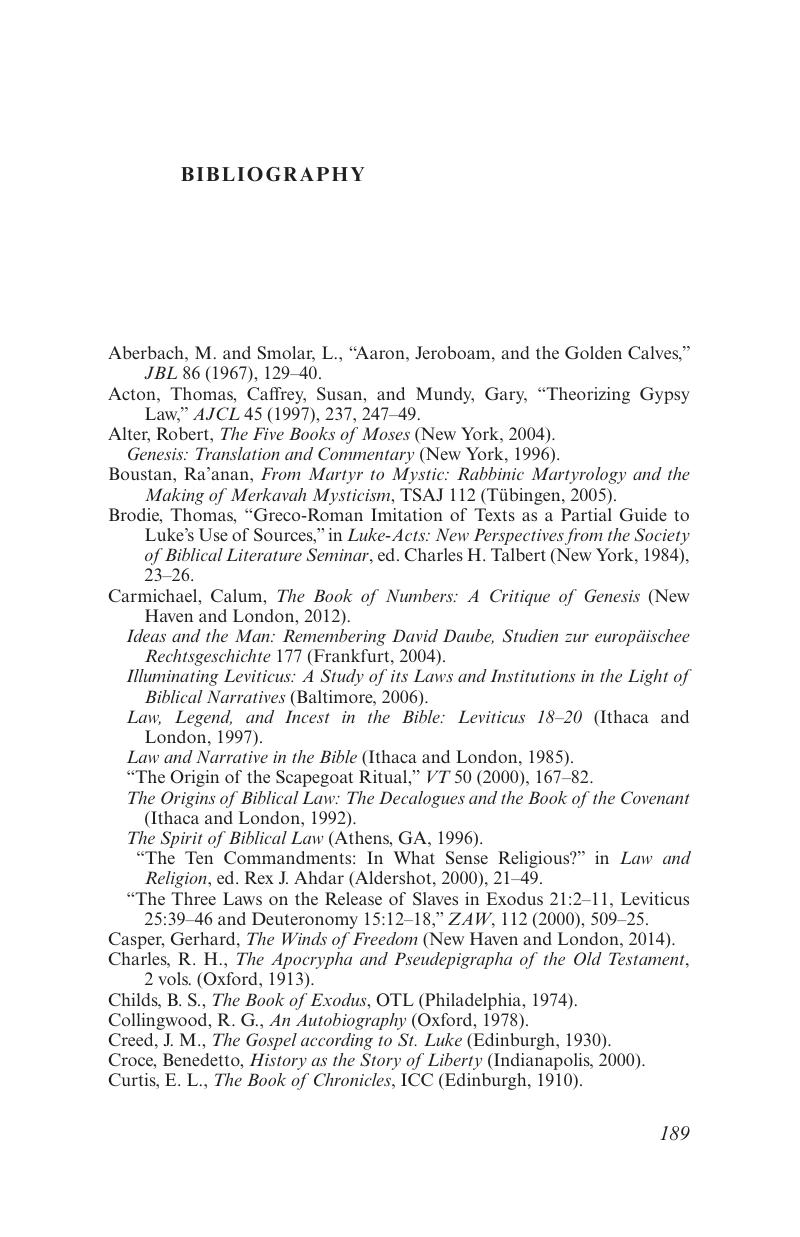Book contents
- The Sacrificial Laws of Leviticus and the Joseph Story
- The Sacrificial Laws of Leviticus and the Joseph Story
- Copyright page
- Contents
- Preface
- Abbreviations
- Introduction
- 1 Genesis and Exodus as Prelude to Leviticus
- 2 Joseph as Idolater (Lev 1–3)
- 3 Inadvertent Offenses (Lev 4)
- 4 Sins of Israel’s First Family (Lev 5:1–6:7)
- 5 Offenses at Joseph’s Banquet (Lev 6:8–7:10)
- 6 Joseph’s Banquet and Wellbeing Offerings (Lev 7:11–36)
- 7 Aaron as a Parallel Joseph (Lev 8–9)
- 8 Impact of the Golden Calf on Narratives and Rules (Lev 9–10)
- 9 Interpreting Law
- Bibliography
- Subject Index
- Index of References
- References
Bibliography
Published online by Cambridge University Press: 30 August 2017
- The Sacrificial Laws of Leviticus and the Joseph Story
- The Sacrificial Laws of Leviticus and the Joseph Story
- Copyright page
- Contents
- Preface
- Abbreviations
- Introduction
- 1 Genesis and Exodus as Prelude to Leviticus
- 2 Joseph as Idolater (Lev 1–3)
- 3 Inadvertent Offenses (Lev 4)
- 4 Sins of Israel’s First Family (Lev 5:1–6:7)
- 5 Offenses at Joseph’s Banquet (Lev 6:8–7:10)
- 6 Joseph’s Banquet and Wellbeing Offerings (Lev 7:11–36)
- 7 Aaron as a Parallel Joseph (Lev 8–9)
- 8 Impact of the Golden Calf on Narratives and Rules (Lev 9–10)
- 9 Interpreting Law
- Bibliography
- Subject Index
- Index of References
- References
Summary

- Type
- Chapter
- Information
- The Sacrificial Laws of Leviticus and the Joseph Story , pp. 189 - 193Publisher: Cambridge University PressPrint publication year: 2017



